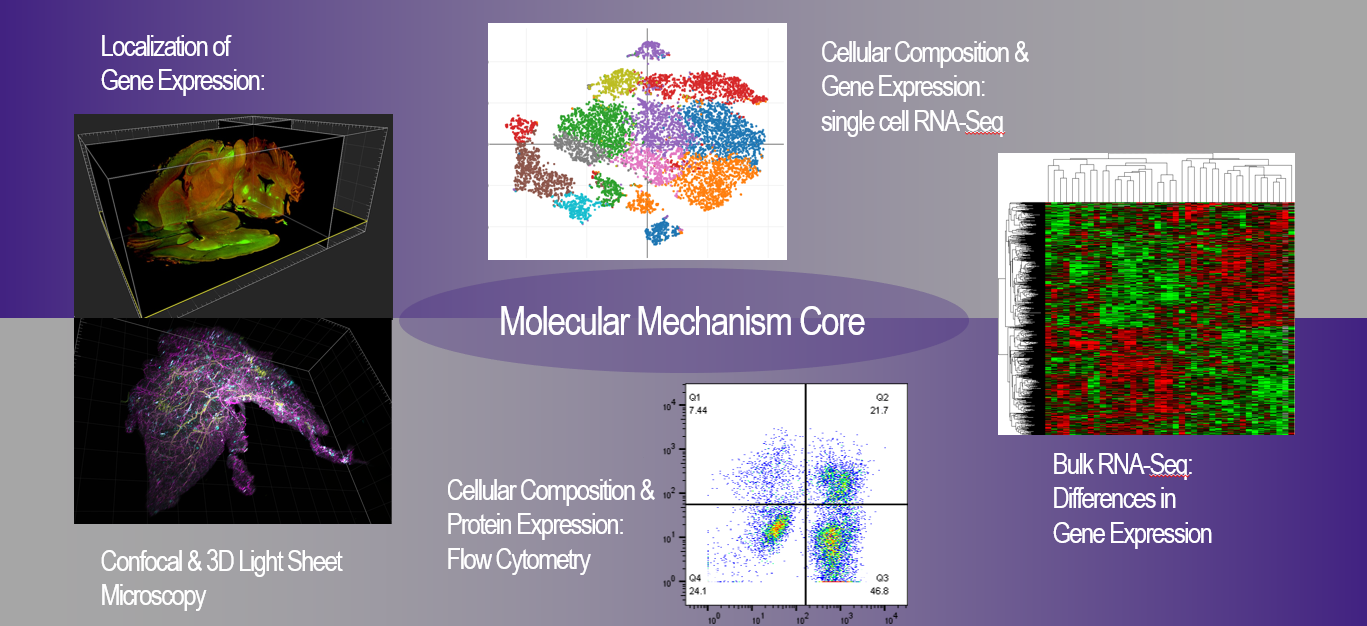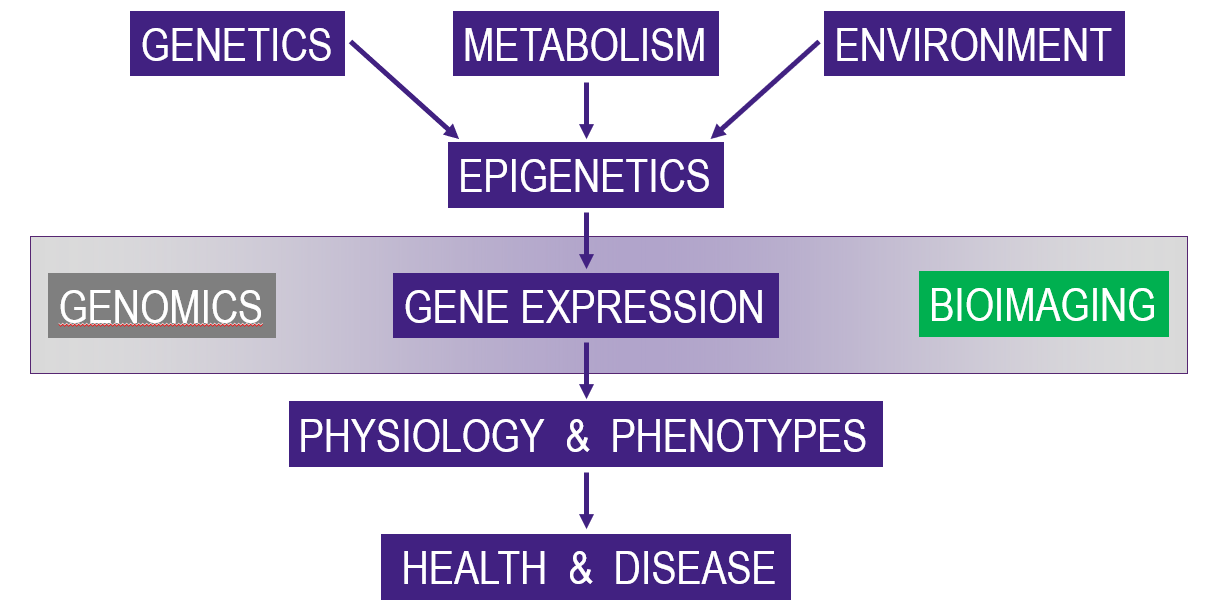About the Core

The Molecular Mechanisms Core provides the technologies to investigate the molecular and cellular mechanisms that form the metabolic basis of health and disease. These technologies focus on measuring the expression of genes and gene products as the primary drivers of physiology and phenotypes.
Information encoded in the genome is responsible for physiological processes, and it is realized through epigenetics – the regulatory realm that controls gene expression. Gene transcription generally occurs as the consequence of cellular signaling and is influenced by environmental interactions such as metabolic status, exposure to pathogens, stress, or any other process that changes epigenetic function, e.g. through activation of transcription factors, histone modifications, or DNA methylation. Transcription is the prerequisite for information to emerge from the genome, producing mRNA encoding proteins, and non-coding RNA with a variety of biological function. With transcription being the core link to physiology and phenotypes, the Molecular Mechanisms Core offers tools to assess epigenetic regulation, and technologies to measure of gene expression.

Traditionally, measurements of gene expression have been understood to mean measurements of mRNA, either for specific genes or gene sets, or through systems biology approaches such as RNA-Seq. However, histological techniques such as immunohistochemistry, immunofluorescence, and in situ hybridization also represent measurements of gene expression as they focus on localizing specific gene expression products - proteins or mRNA - in 2- or 3-dimensional space within cells or tissues. For these reasons, the Molecular Mechanisms Core views the topic ‘gene expression’ as a continuum that encompasses both genomics-based methods to quantify RNA expression at tissue, cell, or single-cell level, and bioimaging approaches that provide critical spatial information on where a given mRNA and its downstream products occur. These methods serve to reveal how expression affects biochemical mechanisms, behavior of cells, function of tissues, and physiological processes that all contribute to health or disease.
Bioinformatics provides the underlying fabric for success with both Genomics and Bioimaging approaches. With the specific goal to enhance and strengthen the Center, the Molecular Mechanisms Core will provide extended bioinformatics support before as well as after experiments, thus covering the range from experimental design to data analysis, visualization, management, and sharing.


